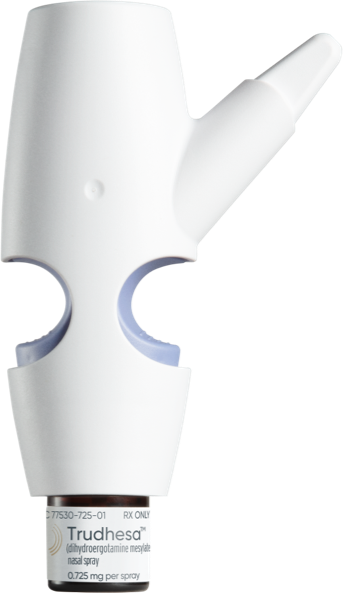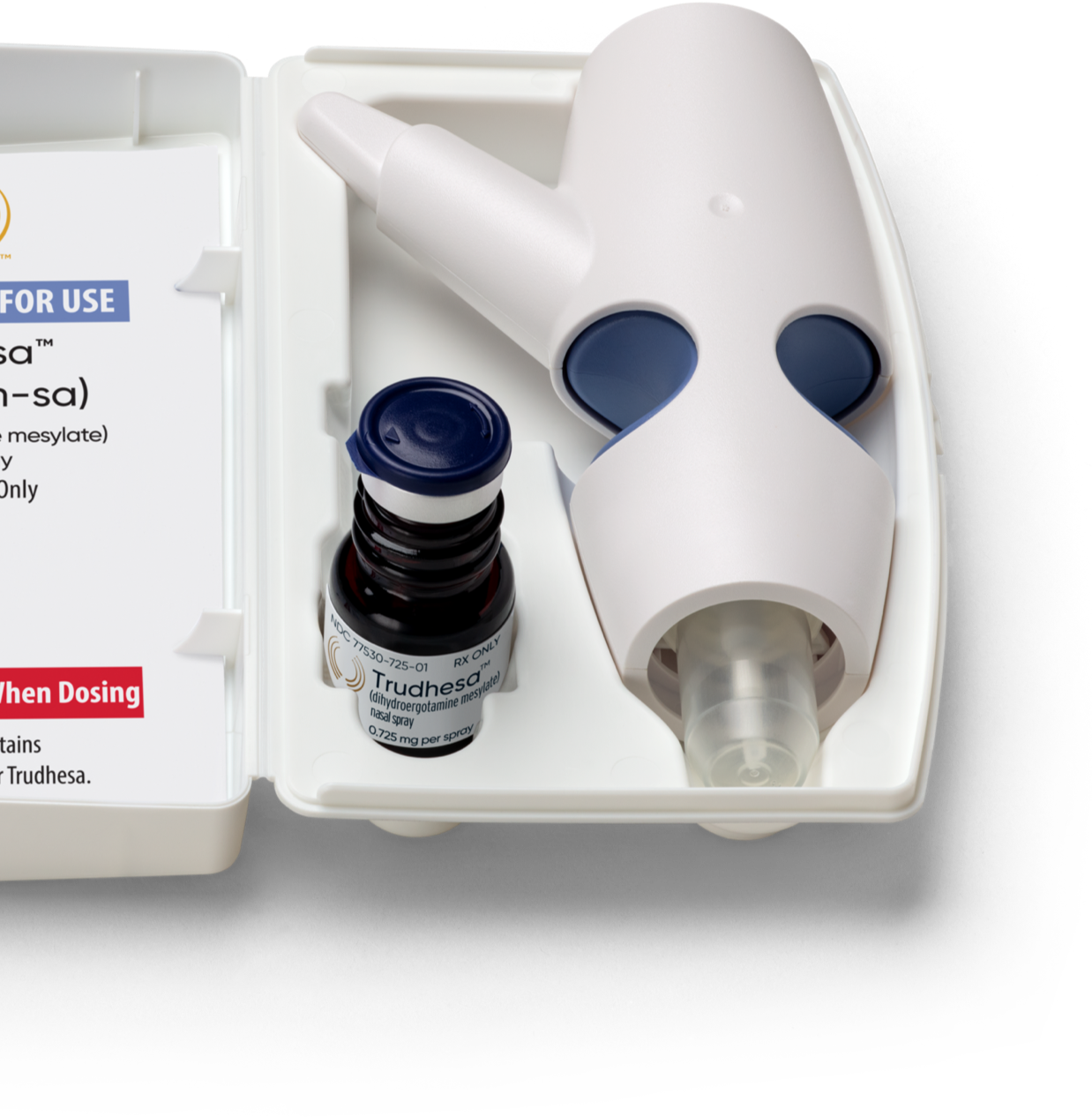
Before using Trudhesa, watch this quick how-to video
Please follow complete Instructions for Use, provided with the product.
Download Instructions for Use
TITLE: Be Direct
VOICEOVER: Ok, are you having a migraine attack? Time to be direct. Let’s go. De-box and determine that everything is in good shape. It looks good to me. Next, you install. Just be careful, it can be a little sharp. Well, R is for ready. You ready the POD by priming it. You press firmly 4 times. This is very important. Looks like it’s ready. Now you engage the POD to the nose, and you press like you’re priming. It’s nice and gentle. Now complete your dose in the other nostril. Last step, T is for toss. Get rid of it, throw it away, you do not need it. You only use it once. That’s it! You have a migraine attack? Be direct. And don’t forget to check out these. Stay tuned for the Important Safety Information. For complete administration information, please see the Instruction for Use sheet that comes in each box of Trudhesa.

Determine everything is good to go
Install vial and POD together
Ready the POD by priming
Engage POD to nose
Complete your dose with one spray per nostril.
Toss as it can only be used once.




